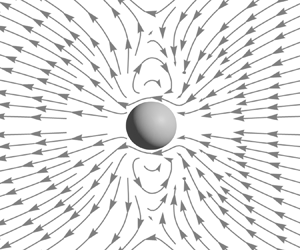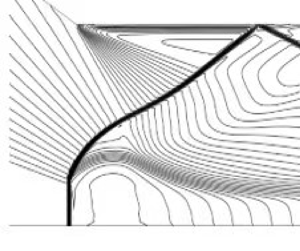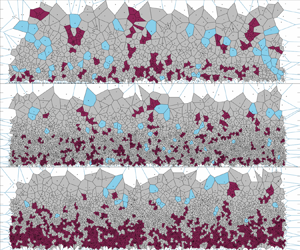Refine listing
Actions for selected content:
1416829 results in Open Access
Trinity, simplicity, and contradictory theology: a theologian's reflections
-
- Journal:
- Religious Studies / Volume 60 / Issue 4 / December 2024
- Published online by Cambridge University Press:
- 26 March 2024, pp. 699-705
- Print publication:
- December 2024
-
- Article
- Export citation
Bicuspidisation of unicuspid stenotic pulmonary valve in a nine-year-old male
-
- Journal:
- Cardiology in the Young / Volume 34 / Issue 5 / May 2024
- Published online by Cambridge University Press:
- 26 March 2024, pp. 1153-1155
-
- Article
-
- You have access
- Open access
- HTML
- Export citation
#BringBackOurGirls: Transnational Activism and the Remediation of the 2014 Chibok Girls’ Kidnapping in Nigeria
-
- Journal:
- African Studies Review / Volume 67 / Issue 2 / June 2024
- Published online by Cambridge University Press:
- 26 March 2024, pp. 295-320
-
- Article
-
- You have access
- Open access
- HTML
- Export citation
Empowering Digital Democracy
-
- Journal:
- Perspectives on Politics / Volume 22 / Issue 3 / September 2024
- Published online by Cambridge University Press:
- 26 March 2024, pp. 819-835
- Print publication:
- September 2024
-
- Article
-
- You have access
- Open access
- HTML
- Export citation
The propulsion direction of nanoparticles trapped in an acoustic field
-
- Journal:
- Journal of Fluid Mechanics / Volume 984 / 10 April 2024
- Published online by Cambridge University Press:
- 26 March 2024, R1
-
- Article
-
- You have access
- Open access
- HTML
- Export citation
Probabilistically coherent credences despite opacity
-
- Journal:
- Economics & Philosophy / Volume 40 / Issue 2 / July 2024
- Published online by Cambridge University Press:
- 26 March 2024, pp. 497-506
-
- Article
-
- You have access
- Open access
- HTML
- Export citation
Diagonal decision theory
-
- Journal:
- Economics & Philosophy / Volume 40 / Issue 2 / July 2024
- Published online by Cambridge University Press:
- 26 March 2024, pp. 485-496
-
- Article
-
- You have access
- Open access
- HTML
- Export citation
Reflection of a centred compression wave
-
- Journal:
- Journal of Fluid Mechanics / Volume 984 / 10 April 2024
- Published online by Cambridge University Press:
- 26 March 2024, A3
-
- Article
- Export citation
A TIME-INTEGRATED SAMPLER FOR RADIOCARBON ANALYSIS OF AQUATIC METHANE
-
- Journal:
- Radiocarbon / Volume 66 / Issue 2 / April 2024
- Published online by Cambridge University Press:
- 26 March 2024, pp. 421-435
- Print publication:
- April 2024
-
- Article
-
- You have access
- Open access
- HTML
- Export citation
On the Basis of Migratory Vulnerability: Augmenting Article 14 of the European Convention on Human Rights in the Context of Migration
-
- Journal:
- International Journal of Law in Context / Volume 20 / Issue 1 / March 2024
- Published online by Cambridge University Press:
- 26 March 2024, pp. 92-112
-
- Article
-
- You have access
- Open access
- HTML
- Export citation
Experimental study of the effect of particle–wall interactions on inertial particle dynamics in wall turbulence
-
- Journal:
- Journal of Fluid Mechanics / Volume 984 / 10 April 2024
- Published online by Cambridge University Press:
- 26 March 2024, A4
-
- Article
- Export citation
BOUNDED SUPPORT IN LINEAR RANDOM COEFFICIENT MODELS: IDENTIFICATION AND VARIABLE SELECTION
-
- Journal:
- Econometric Theory / Volume 41 / Issue 4 / August 2025
- Published online by Cambridge University Press:
- 26 March 2024, pp. 947-976
-
- Article
- Export citation
FIRST DIRECT RADIOCARBON DATING (22–27 CAL KA BP) OF MASSIVE ICE AT THE MECHIGMEN AND LAVRENTIYA BAYS COAST, EASTERN CHUKOTKA
-
- Journal:
- Radiocarbon / Volume 66 / Issue 2 / April 2024
- Published online by Cambridge University Press:
- 26 March 2024, pp. 410-420
- Print publication:
- April 2024
-
- Article
- Export citation
Asylum Marginalisation Renewed: ‘Vulnerability Backsliding’ at the European Court of Human Rights
-
- Journal:
- International Journal of Law in Context / Volume 20 / Issue 1 / March 2024
- Published online by Cambridge University Press:
- 26 March 2024, pp. 16-34
-
- Article
-
- You have access
- Open access
- HTML
- Export citation
Vulnerability’s Legal Life: An Ambivalent Force of Migration Governance
-
- Journal:
- International Journal of Law in Context / Volume 20 / Issue 1 / March 2024
- Published online by Cambridge University Press:
- 26 March 2024, pp. 1-15
-
- Article
-
- You have access
- Open access
- HTML
- Export citation
The Reflection Principle and the Ex-Ante Pareto Principle in Anna Mahtani’s Objects of Credence
-
- Journal:
- Economics & Philosophy / Volume 40 / Issue 2 / July 2024
- Published online by Cambridge University Press:
- 26 March 2024, pp. 478-484
-
- Article
- Export citation
Carers’ and therapists’ views of internet-delivered guided self-help acceptance and commitment therapy for family carers of people with dementia (iACT4CARERS): a qualitative study in the context of ethnic minority families
-
- Journal:
- The Cognitive Behaviour Therapist / Volume 17 / 2024
- Published online by Cambridge University Press:
- 26 March 2024, e11
-
- Article
-
- You have access
- Open access
- HTML
- Export citation
Critical Race Theory: How Policy Language Differentially Engages Symbolic Racism and Partisanship
-
- Journal:
- Perspectives on Politics / Volume 22 / Issue 3 / September 2024
- Published online by Cambridge University Press:
- 26 March 2024, pp. 659-670
- Print publication:
- September 2024
-
- Article
-
- You have access
- Open access
- HTML
- Export citation
Partisanship and Political Socialization in Electoral Autocracies
-
- Journal:
- American Political Science Review / Volume 119 / Issue 1 / February 2025
- Published online by Cambridge University Press:
- 26 March 2024, pp. 208-223
- Print publication:
- February 2025
-
- Article
-
- You have access
- Open access
- HTML
- Export citation









